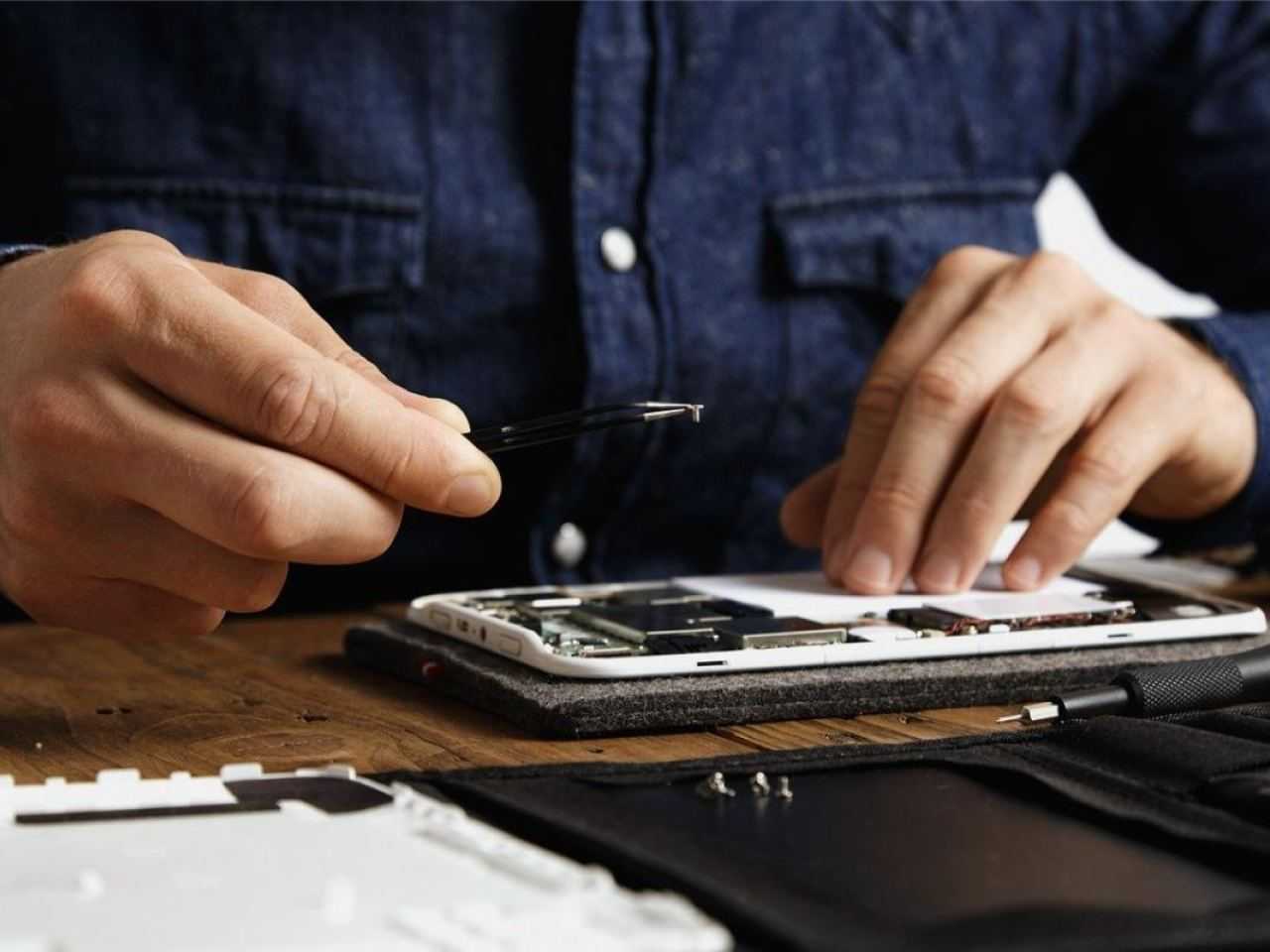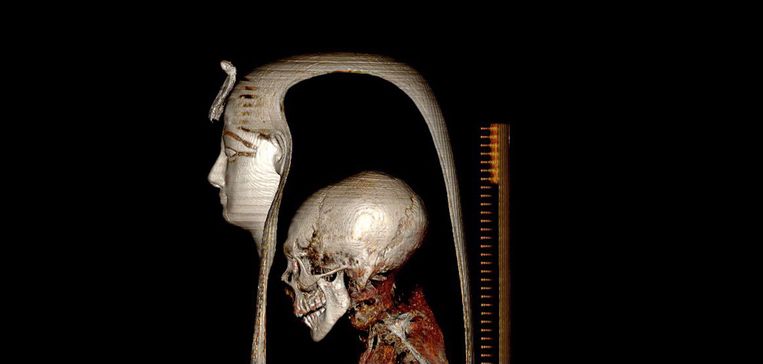Thanks to its floral splendor and face mask, Egyptologists have found that the mummified pharaoh Amenhotep I was too beautiful to empty his bag for 130 years. Using a CT scanner, they can now look under the covers, shedding new light on how later priests dealt with mummified kings.
Unlike other mummified kings in the major museums in Cairo, the mummy of King Amenhotep I was never unpacked. Thanks to a CT scanner, scientists can still examine the body under the coils in 2021, without stripping the king of it. Amenhotep I is one of more than forty mummies examined in this way in Egyptian mummy project.
in a frontiers in medicine Egyptian researchers write that the king, who ruled for twenty years around 1500 BC at the beginning of a long and prosperous period, died young, at the age of 35. Perhaps the golden belt and the dozens of amulets he carried were just a small part of the valuables he was originally buried with.
Right arm crossed over chest
Amenhotep I is lying there as a true king, his right arm crossed on his chest. It is the earliest example of this “royal attitude”. His left arm is at his side. Like his head, it was once cut off from his body, most likely by grave robbers. That was later reclaimed, for good and bad, according to new scans. By priests, researchers believe, about 400 years after his death.
In the royal tomb where Amenhotep I lay, thieves were at work. “They didn’t keep the bodies,” said Egyptologist Daniel Soliman, who was not involved in the study. “Priests who enter tombs around that time want to collect valuables. They reuse them for new funerals; it’s a less prosperous time. But this research clearly shows that wasn’t the only reason. Secret places in rock tombs.
Secret
Where this will be kept a secret for so long, says Solomon. But at the end of the 19th century, all kinds of unknown art treasures suddenly appeared on the market from official excavation sites. Excavated by local residents at the site of a secret reburial, it turned out after violent interrogations. In 1881 the Antiquities Service emptied the temples within two days. Everything goes to Cairo, including all the royal bodies, including Amenhotep I”
Soon after this discovery, Solomon said, several mummies were opened and studied. “The rest will follow later. But not Amenhotep I. His intricate body is beautifully decorated with flowers and a mask that researchers think it is a shame to mutilate.”
However, X-rays have been carried out since the beginning of the twentieth century, which show, among other things, that the left forearm is cut off. It was not yet known that later priests reattached the arm to the body, just like the head.
While the covers were still open unchallenged in 1881, Egyptologists are now thinking more about the ethical implications of mummy research. Solomon: “It remains a strange feeling to study the body of someone who has never asked for it. The genitals are literally measured.” Computerized tomography is called an improvement. “You still look at someone else’s body without being asked, but at least you leave it intact.”

“Creator. Award-winning problem solver. Music evangelist. Incurable introvert.”







More Stories
An official ceremony for Crown Prince Moulay El Hassan (photos)
Ten dead after a helicopter collision – in the sky
Indian Prime Minister Modi accused of hate speech after statements in which he described Muslims as “invaders”